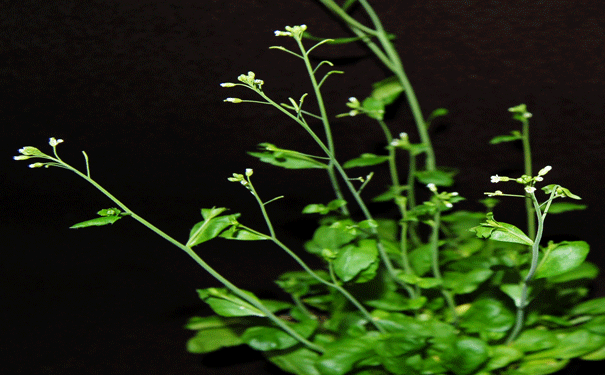
Arabidopsis Thaliana. Image: Takato Imaizumi
Plants have a circadian clock that coordinates flowering time with the appropriate season for reproductive success.
How plants know when is the best time to flower is a question that has baffled biologists for the last 80 years. But a US research group may have finally solved the puzzle, and it’s all in the genes.
Researchers from the University of Washington investigated a specific protein called FKF1. They suspected from previous work that the protein is vital in the timing of plant flowering and wanted to understand its role on a molecular level.
Plants express the FKF1 protein, which is a type of photoreceptor, in the late afternoon everyday though out the year. If there is no light at this time, such as in winter when days are short, the protein remains inactive and the biochemical process that leads to flower production is not initiated.
“The presence of light in the late afternoon is the signal for plants that the days are getting longer and that it is the optimal time for flowering,” explained Takato Imaizumi, co-author of the study published in Science recently.
The team have discovered how FKF1 regulates the induction of flowering in the Arabidopsis plant, but this process should hold true in many other more complex plants grown as crops such as rice, wheat and barley. Imaizumi believes that new technologies based this research will be useful in the agricultural industry.
“The acceleration of flowering time in crops might give us a better yield per growing season. And for biofuel feed stock, delaying flowering time may give us more vegetative mass,” said Imaizumi. “Also, if we could control the timing of flowering in horticultural plants, that might result in increased commercial values.”
Chrissie Prychid from the University of New England agrees that unravelling the intricate genetic systems that control plant flowering is of global importance. She explained that as more flowering control genes are identified, such as FKF1, it will allow for genetic variations to be applied by commercial industries. The end application of this type of research will be to tailor the life cycles of crop plants to the environments in which they are grown, and also to new conditions predicted by climate change, thereby maximising their yield potential.
Source: Science Daily






